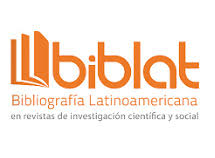BRICS: financial literacy and financial inclusion
Resumen
En este artículo abordamos el estado de la educación y la inclusión financiera en los países BRICS donde la desigualdad y la pobreza siguen presentes. Del mismo modo la inclusión financiera debe combinarse con la educación financiera para mejorar las capacidades financieras de las personas; asimismo, revisamos cómo los países BRICS están gestionando dichos problemas. Se utilizaron los datos de la Encuesta Global FinLit 2014 de Standard & Poor’s Ratings Services para analizar la educación financiera, la base de datos de inclusión financiera mundial 2014 y la encuesta de acceso financiero 2015 para examinar la inclusión financiera. Dado que no más de 5 de cada 10 personas en los países del BRICS responden correctamente a preguntas básicas de problemas financieros, y los resultados de las estrategias nacionales para la educación financiera aún no están disponibles, es difícil evaluar si las personas serán capaces de usar instrumentos financieros y obtener los beneficios de la inclusión financiera. Por lo tanto, en este momento, las preguntas sobre el acceso financiero universal aún están sin resolver.
Palabras clave
Texto completo:
PDFReferencias
Atkinson, A. and Messy, F. (2012). Measuring Financial Literacy: Results of the OECD / International Network on Financial Education (INFE) Pilot Study. OECD Working Papers on Finance, Insurance and Private Pensions, 15.
Bateman, M. (2010). Why microfinance doesn’t work? The destructive rise of local neoliberalism. London: Zed Books.
Cohen, M. and Sebstad, J. (2003). Financial Education for the Poor. Working Paper, 1.
Demirgüç Kunt, A., Klapper, L. F., Singer, D. and Van Oudheusden, P. (2015). The Global Findex Database 2014: measuring financial inclusion around the world. World Bank Policy Research Working Paper, 7,255.
Dichter, T.W. and Harper, M. (Eds.) (2007). What’s wrong with microfinance?. Rugby: Practical Action Publishing.
Drury, L.L. III. (2009). Predatory Lending and Its Impact on Consumer Credit. Loyola Journal of Public Interest Law, 10 (2), 137-148.
Global Partnership for Financial Inclusion (GPFI) (2016). Global Partnership for Financial Inclusion (GPFI) China 2016. Priorities Paper. Available in: http://www.gpfi.org/ publications/global-partnership-financial-inclusion-gpfi-china-2016- priorities-paper [Retrieved on March 16, 2016]
_______ (GPFI) (n.d.). G20 Financial Inclusion Indicators. Available in: http://www.gpfi.org/ sites/default/files/G20%20Set%20of%20Financial%20Inclusion%20In dicators.pdf [Retrieved on March 16, 2016]
Hilgert, M., Hogarth, J.M., and Beverly, S. (2003). Household Financial Management: The Connection Between Knowledge and Behavior. Federal Reserve Bulletin, 89, 309- 322.
Hill, R.P. and Kozup, J.C. (2007). Consumer Experiences with Predatory Lending Practices.
The Journal of Consumer Affairs, 41 (1), 29-46.
Holzmann, R., Mulaj, F. and Perotti, V. (2013). Financial capability in low-and middle- income countries: measurement and evaluation. Financial Literacy and Education Russia Trust Fund. Washington, D.C.: The World Bank.
Jeurissen, R. and Van de Ven, B. (2006). Developments in Marketing Ethics. Business Ethics Quarterly, 16 (3), 427-439.
Klapper, L., Lusardi, A. and Van Oudheusden, P. (2015). Financial Literacy Around the World: Insights from the Standard & Poor’s Ratings Services Global Financial Literacy Survey. Available in: https://www.mhfi.com/corporate-responsibility/global- financial-literacy-survey [Retrieved March 21, 2016]
Lusardi, A. and Mitchell, O. (2007). Financial Literacy and Retirement Preparedness:Evidence and Implications for Financial Education. Business Economics, 42 (1), 35-44.
Lusardi, A. (2008). Financial Literacy: An Essential Tool for Informed Consumer Choice?
Working Paper, 08-11.
Mader, P. (2016). Questioning Three Fundamental Assumptions in Financial Inclusion
(Evidence Report No. 176). Brighton: Institute of Development Studies.
Organisation for Economic Cooperation and Development (OECD) (2005). Improving Financial Literacy – Analysis of Issues and Policies. Paris: Organisation for Economic Cooperation and Development Publications.
______(2013). Advancing national strategies for financial education. Paris: Organisation for Economic Cooperation and Development Publications.
Raccanello, K. (2013). Predatory microfinance. In A. Rajmani Singha. Financial Inclusion for
Inclusive Growth. (226-239). New Delhi: Concept Publishing Company Pvt. Ltd.
Russian Federal State Statistics Service (Rossstat) (2015). BRICS Joint Statistical Publication 2015. Moscow: Information and Publishing Centre “Statistics of Russia”. Available
in: http://www.gks.ru/free_doc/doc_2015/BRICS_ENG.pdf [Retrieved on March18, 2016]
Stango, V. and Zinman, J. (2009). Exponential Growth Bias and Household Finance. Journalof Finance, 64 (6), 2,807-2,849.
World Bank (2012). Financial inclusion strategies: reference framework. Washington, D.C.: The World Bank.
______(2016). UFA 2020 Overview: Universal Financial Access by 2020. Available in: http://www.worldbank.org/en/topic/financialinclusion/brief/achieving-universalfinancial-
access-by-2020 [Retrieved on March 16, 2016]
U.S. Department of Housing and Urban Development (US-HUD) (2001). Curbing Predatory
Home Mortgage Lending. Washington, D.C.: HUD-Treasury Task Force on Predatory Lending.
Enlaces refback
- No hay ningún enlace refback.
Copyright (c) 2019 Regiones y Desarrollo Sustentable

Este obra está bajo una licencia de Creative Commons Reconocimiento 4.0 Internacional.
REGIONES Y DESARROLLO SUSTENTABLE
Año XXIII, No. 44, Enero-Diciembre, 2023, es una revista de publicación continua editada por El Colegio de Tlaxcala, A.C., Avenida Melchor Ocampo No. 28, Col. San Pablo Apetatitlán, Apetatitlán de Antonio Carvajal, Tlaxcala, C. P. 90600 Tel. 52 (246) 46 4 52 33, ext. 1135, http://www.coltlax.edu.mx/openj/index.php/ReyDS, rev_regionesydesarrollosustentable@coltlax.edu.mx Editor responsable: Arturo Juárez Martínez. Reserva de Derechos al Uso Exclusivo No., ISSN:2594-1429, otorgados por el Instituto Nacional de Derecho de Autor. Responsable de la última actualización de este número, Departamento de Ediciones de El Colegio de Tlaxcala, A.C., Arturo Juárez Martínez, Avenida Melchor Ocampo No. 28, Col. San Pablo Apetatitlán, Apetatitlán de Antonio Carvajal, C.P. 90600, fecha de última modificación: 02 de febrero de 2024.








